Polonsky Foundation Greek Manuscripts Project
This project, a collaboration between the Universities of Cambridge and Heidelberg which runs from 2018 to 2021, will conserve, catalogue and digitise all the medieval and early Modern Greek manuscripts in Cambridge libraries, including the UL, Fitzwilliam Museum and 12 colleges, and will digitise and catalogue the Greek manuscripts of the Bibliotheca Palatina, now physically divided between the Vatican Library and Heidelberg University Library.
See below for an overview of the three strands of work going on in Cambridge: conservation, digitisation and cataloguing. Behind the scenes, all elements are co-ordinated by a project manager and project co-ordinator and supported by colleagues across the UL from Finance, Development, the Digital Library and the Manuscripts reading room.
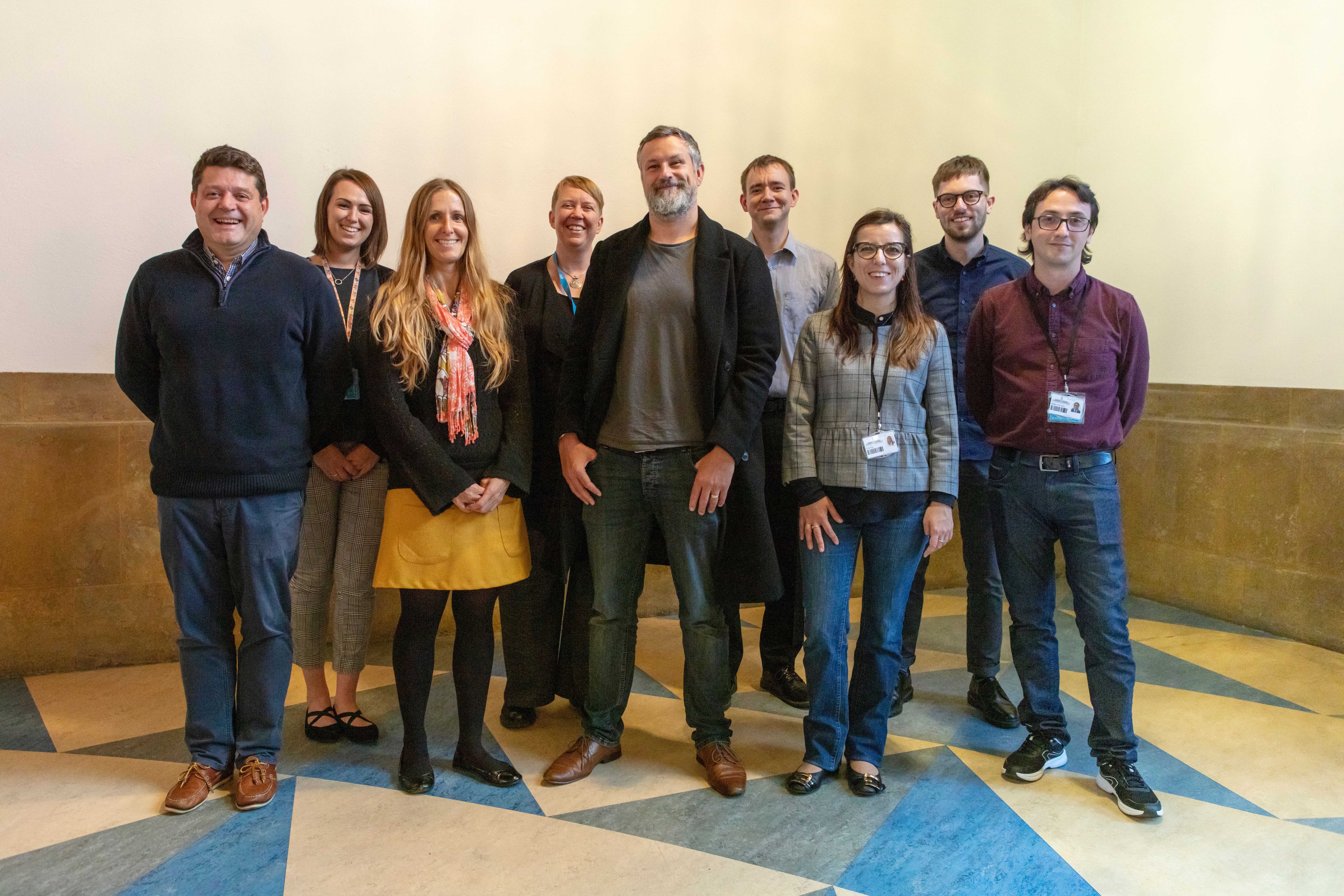
Cambridge project team (L-R): Shaun Thompson (Conservation), Ceri Bennett (Programme Coordinator), Jenny Grewcock (Programme Manager), Suzanne Paul (Project Director), Mark Box (Senior Photographer), Christopher Wright (Cataloguer), Erika Elia (Cataloguer), Sam Foley (Conservator), Matteo di Franco (Cataloguer), Cécilia Duminuco (not present in photo - Conservator)
Conservation
Two conservators have been appointed on the Polonsky Greek Manuscript Project under the guidance of conservation supervisor Shaun Thompson. As conservators, the primary aim is to condition survey and prepare the four hundred and forty-four Greek manuscripts for digitisation. This involves ensuring the items are stable for photography, providing handling guidance to the CUL digitisation team (DCU) and carrying out conservation treatment where necessary.

Above: Fragments and unbound materials during treatment
At the start of the project, we familiarised ourselves with the materials. This meant looking at the collections, gathering data including cataloguing and codicological information, and assessing the items condition. The large quantity of data to collect for our survey led us to build a database, which has enabled us to input and manage our data efficiently, while sharing it with the wider project team.

Above left: Some tools used during the condition survey. Above middle: Books ready for condition survey. Above right: Condition survey in progress.
To test our survey design, we selected a number of objects of different formats. This allowed us to refine our process and optimise the database for our purpose. Once we were satisfied with the design, the main survey could start. During the survey, we came across fragments, single leaves, medieval bindings and even a wooden board. From studying the data collected, we decided our first step would be to prepare the sixty-eight unbound materials from CUL.

Above left: Rebound Greek manuscript, Epictetus CUL MS Ii.06.41. Above middle: Medieval Greek manuscript, CUL MS Add.720. Above right: Parchment
gathering, CUL MS Add.1879.12
The treatments involved removing the items from their current enclosures; this might be because the materials used were acidic, degraded or structurally weak. Afterwards they could be prepared for imaging, which involved dry cleaning, stabilising tears and losses, pigment consolidation and removing damaging repairs.
Once stable, the manuscripts were imaged by the DCU. After imaging, the items could be rehoused using Melinex pockets, four-flap folders, pamphlets and mounts. The manuscripts could then be returned to the library shelves and be safely consulted by our readers and researchers.
Conservation is currently continuing treatment of the University Library’s Greek manuscripts and will shortly start the treatment of some of the manuscripts held at Cambridge Colleges.
Sam Foley and Cécilia Duminuco
Project Conservators
Digitisation
The Digital Content Unit has experience of quite a few medieval manuscripts digitisation projects. Every time it is a great team effort and involves working with colleagues from other departments. Our closest partners are always conservators. The safety of the manuscripts is our biggest priority, and their help is invaluable. The Polonsky Foundation Greek Manuscripts Project is the first to be co-ordinated by the UL’s Project Support Office, which has also been amazingly helpful. It has allowed us to focus on the actual work of photographing the manuscripts.
The digitisation work of the project was started in February by Amélie Deblauwe. She digitised some of the most fragile fragments, which required extreme care. Amélie completed the first phase of the project, but in June, she fell ill and is now undergoing treatment. Another of our experienced photographers, Mark Box, picked up project duties and is currently working towards completing the second phase of CUL codices and is looking forward to starting on digitising manuscripts from the colleges. Meanwhile, we hope Amélie will get better soon and return to the project.
Everyone who has worked with DCU knows that the primary focus of our efforts is following international digitisation standards and achieving the best quality images. For more on this topic, see our recent blogpost (https://specialcollections-blog.lib.cam.ac.uk/?p=18648) and short video which illuminate some details behind the scenes of the digitisation process (https://www.youtube.com/watch?v=vgh5UhJBv5s). If you would like to learn more, please get in touch; we are happy to host visits to our studios.
The excellent quality images we produce would not be possible without appropriate funding, and that is mainly thanks to digitisation projects like this one. Although the project will only last for a couple of years, it will make a significant contribution towards the continuous investment required in state of the art equipment and in institutional and individual expertise. Digitisation nowadays is a hugely significant part of libraries’ global presence and it plays a vital role in teaching, learning and research. We frequently receive feedback from users of the Cambridge Digital Library from around the world who cannot visit Cambridge in person and who enjoy looking at and learning about the collection items we have published or who rely on our digital surrogates to answer their research questions. This project takes the full advantage of the latest technical developments and is well on the way to achieving the goal of publishing images of all the medieval and early modern Greek manuscripts in Cambridge from cover to cover, some 80,000 images.
Text: Maciej Pawlikowski, Head of Digital Content Unit
Photography: Mark Box, DCU Imaging Specialist
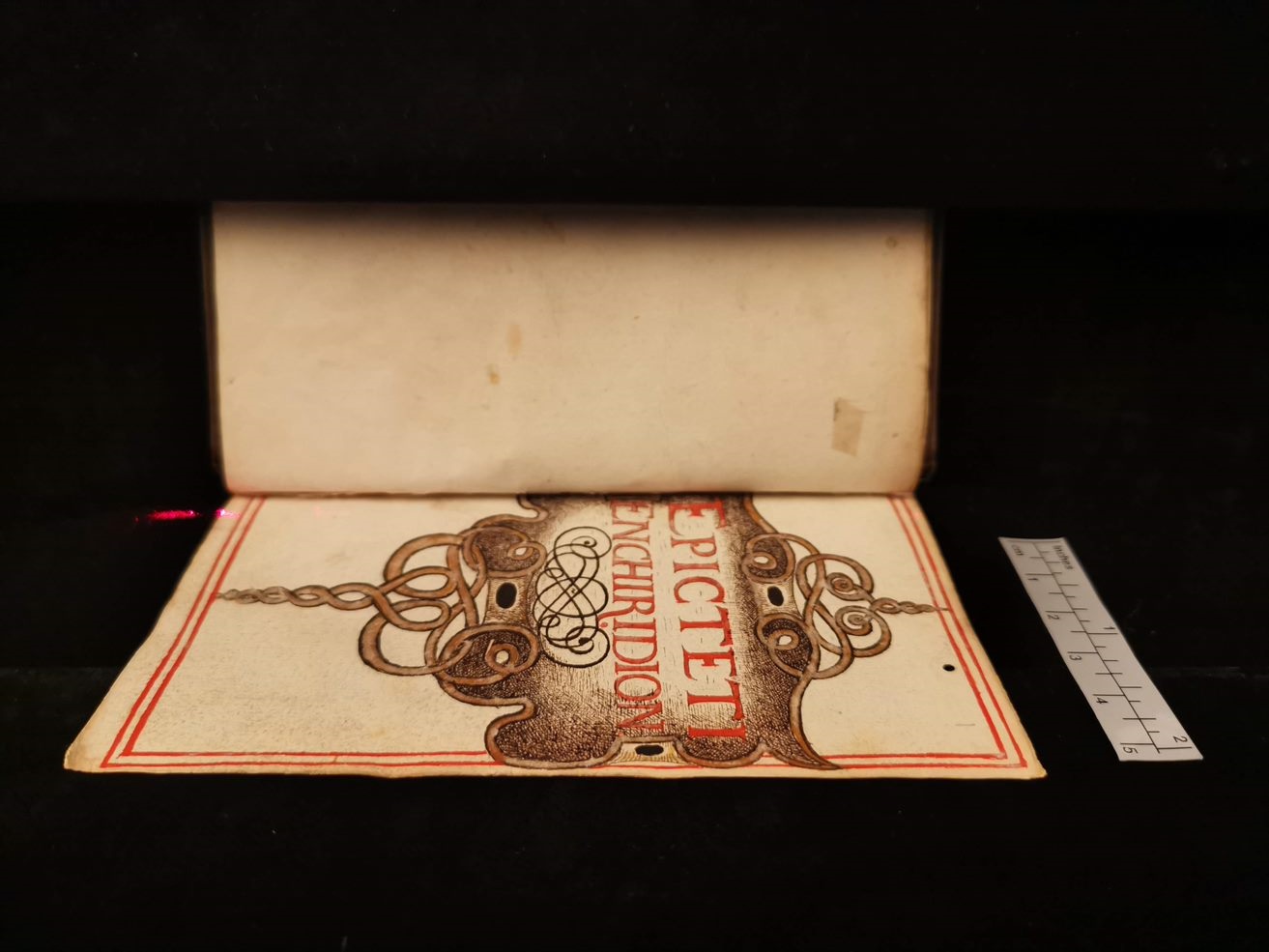
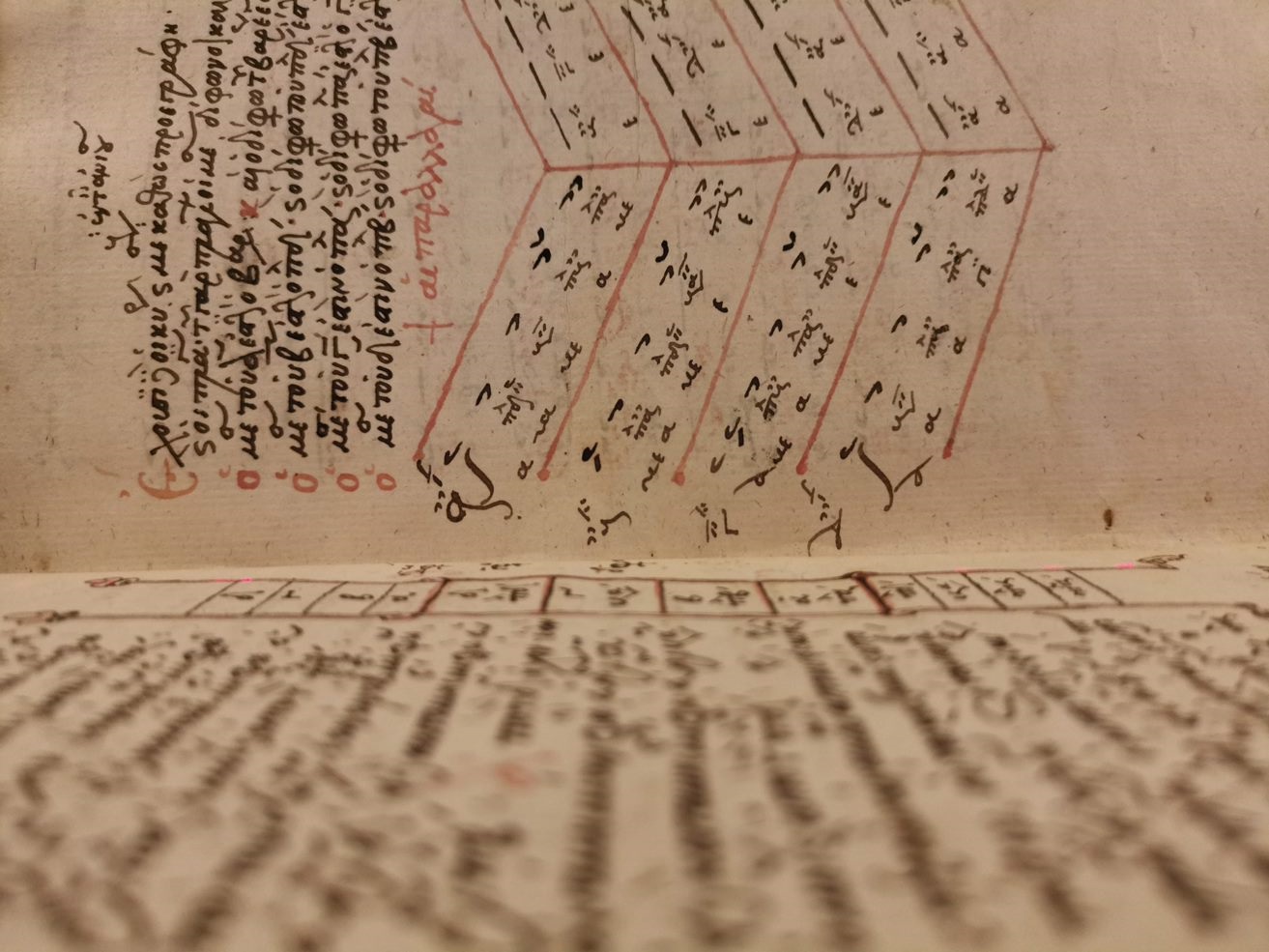
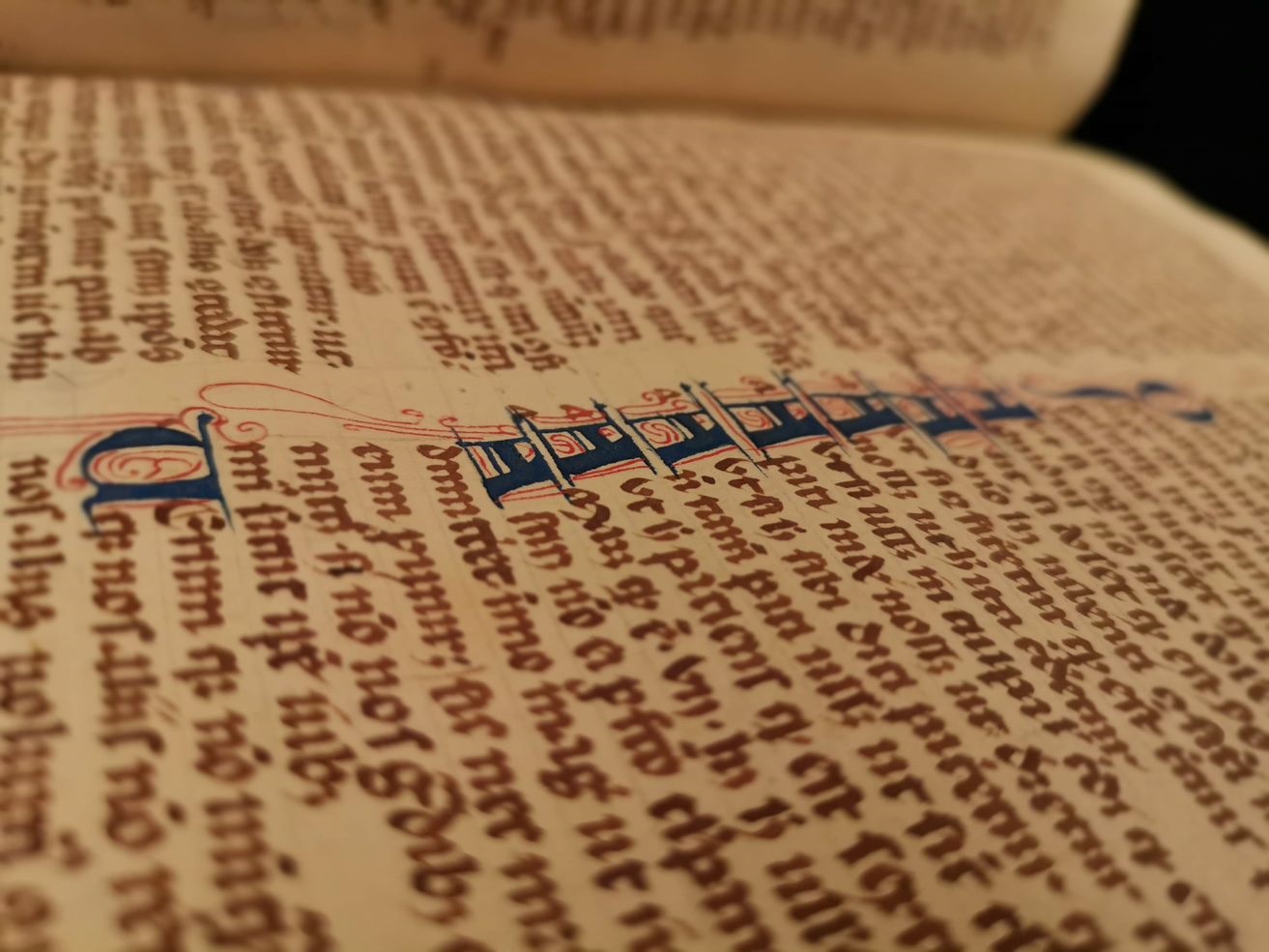
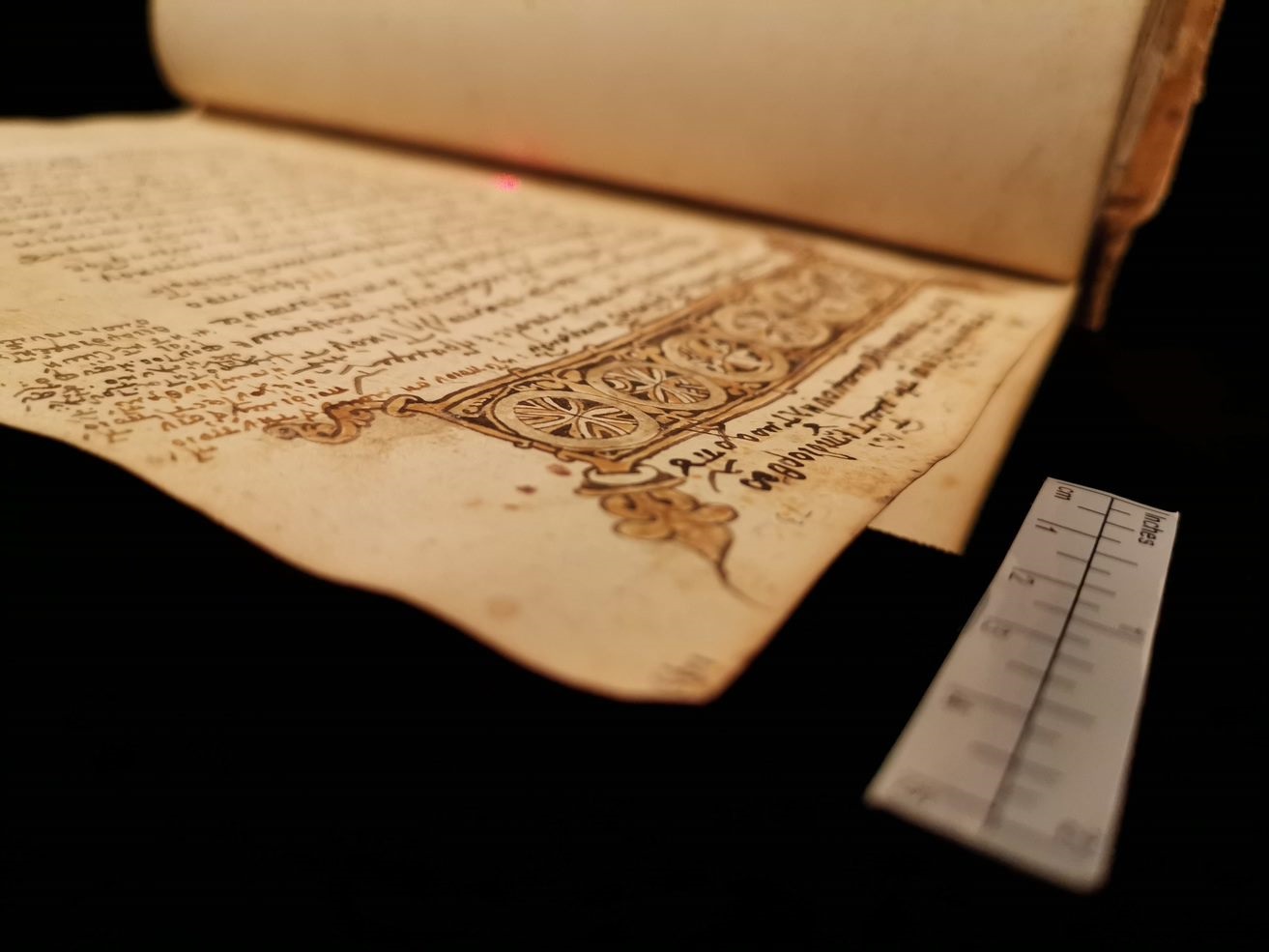
Above top left: CUL MS Ii.6.41, fol. 1r, Above top right: CUL MS Gg.1.2, fol. 16r, Above bottom left: CUL MS, Above bottom right: CUL MS Gg.1.2, fol. 73r
Cataloguing
After a preliminary examination of all the manuscripts in the project and the development of a TEI template for the descriptions, cataloguing is now proceeding at full pace by three full-time cataloguers. So far, some 60 descriptions have been completed. We have concentrated in the first place on the University Library collection, but we will soon start to work on the college manuscripts. The existing 19th and 20th-century catalogue records provide very sparse information about the manuscripts: they concentrate almost entirely on the content, in most cases providing little detail and giving almost no attention to codicological aspects. Some records don’t even mention that the manuscript is written in Greek!
The creation of detailed catalogue descriptions, comprising in addition to the contents, a thorough account of material, foliation, collation, layout, handwriting, decoration, additions, binding and provenance of the book, is of particular importance for the Cambridge collection. While some of the manuscripts have been intensively studied in the past, like, for example, Codex Macedoniensis (CUL MS Add. 6594), an uncial manuscript of the Gospels dated to the 9th century, for many of the Cambridge Greek manuscripts very little information indeed has been recorded by researchers until now. For such manuscripts the project provides a unique, once in several generations’ possibility to offer new insight: combining the details that have been collected for the catalogue descriptions makes it possible to reconstruct the story of the books, how they were produced, in what context, how they were used etc. Online cataloguing alongside digitisation provide material that can be used by scholars worldwide.
A beautiful example of the detective work involved in this process is illustrated by cataloguer Christopher Wright’s blogpost, “Piecing Together the Evidence: Cataloguing a Greek Manuscript”, about CUL MS Kk.5.25, a late 15th-century manuscript containing a lexicon (https://specialcollections-blog.lib.cam.ac.uk/?p=18242). By assembling and analysing the information about the specific characteristics of this codex, it was possible to reconstruct the changes it had undergone since it was made and to understand how it came to have its present form.
Erika Elia
Project Cataloguer
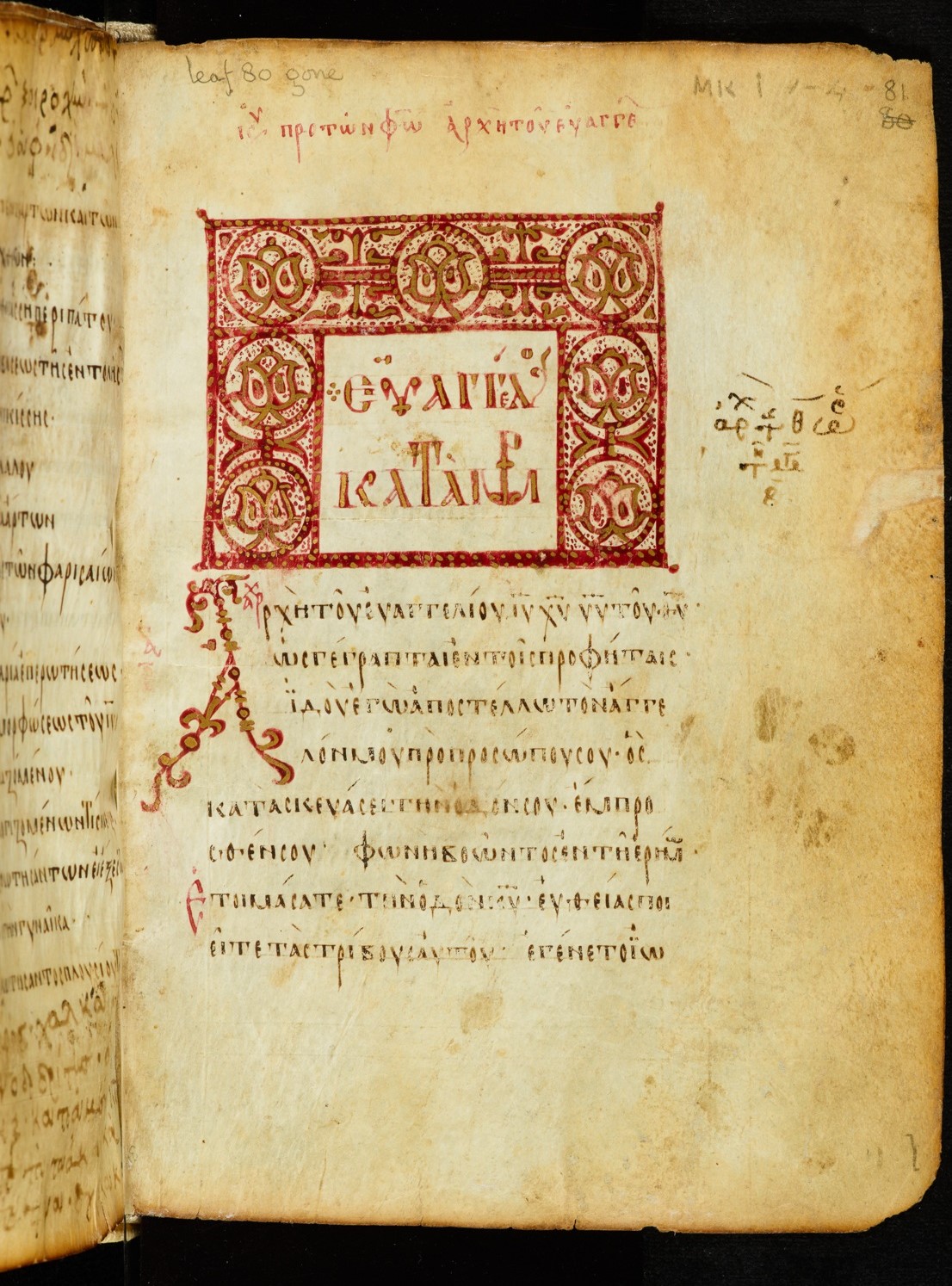
Image above: CUL MS Add. 6594
_______________________________________________________________________________________________________________________________________________________________________________________________________________________________________________

Please check out the Special Collections blog posts for more information about the work involved in the Greek Manuscripts project.
Blog posts available now:
Piecing Together the Evidence: Cataloguing a Greek Manuscript
Conserving fragments
It’s not all about pretty pixels
Medieval Eastern Mediterranean Binding Model – Part 1.
Apart … together (Cataloging Fragments)
The conservators’ challenge – Part 1
Greek Manuscripts Inside and Out: A Conservation Symposium and Workshop
Quires reunited
______________________________________________________________________________________________________________________________________________________________________________________________________________________________________________
T W I T T E R
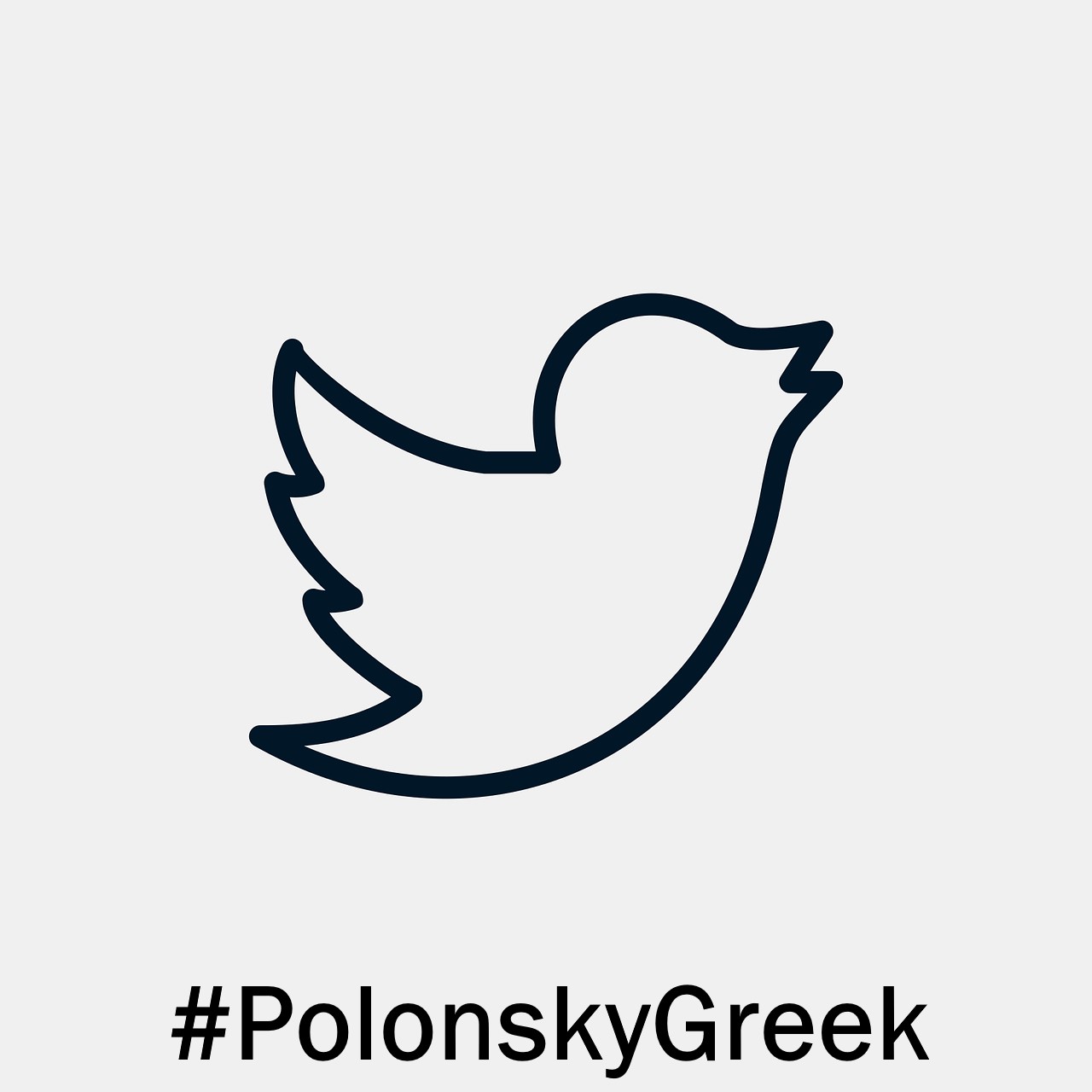
Follow our journey on Twitter!
